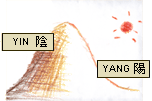A flash mob is a group of strangers who organize themselves, using electronic media such as cell phones or the Internet, to gather together in a public place, behave in a predetermined manner for a predetermined amount of time, and then quickly disperse.
A successful flash mob event depends on the element of surprise. Participants, called mobsters, share news about the time and place for an upcoming event through postings on blogs, chain e-mail messages, SMS text messages and social networking sites such as Facebook and Twitter.
Bill Wasik, senior editor of ,Harper's Magazine, orchestrated the first successful flash mob in June 2003 at Macy's department store. A group of 100 people received instructions to gather at one of four staging areas. Further directions led them to the store's rug department, where they told employees they lived together and were shopping for a "love rug."
Waslik's subsequent flash mobs included one group applauding for 15 seconds in the lobby and mezzanine of the Hyatt hotel and another group pretending to be tourists from Maryland in a SoHo shoe store. It wasn't until June 2006, when Wasik published an article about his flash mobs in Harper's, that their source was publicly known. According to Wasik, he created the flash mob, at least in part, "as a stunt that would satirize scenester-y gatherings."
A successful flash mob event depends on the element of surprise. Participants, called mobsters, share news about the time and place for an upcoming event through postings on blogs, chain e-mail messages, SMS text messages and social networking sites such as Facebook and Twitter.
Bill Wasik, senior editor of ,Harper's Magazine, orchestrated the first successful flash mob in June 2003 at Macy's department store. A group of 100 people received instructions to gather at one of four staging areas. Further directions led them to the store's rug department, where they told employees they lived together and were shopping for a "love rug."
Waslik's subsequent flash mobs included one group applauding for 15 seconds in the lobby and mezzanine of the Hyatt hotel and another group pretending to be tourists from Maryland in a SoHo shoe store. It wasn't until June 2006, when Wasik published an article about his flash mobs in Harper's, that their source was publicly known. According to Wasik, he created the flash mob, at least in part, "as a stunt that would satirize scenester-y gatherings."






